This tree doesn’t look bad. I’ve been growing it for 4 or 5 years. It always gives good fall color.

But I think it could look better. The best time to do one of these assessments is when the leaves have dropped and its time to repot. This is when you can best compare new pots, potting angle etc. and decide what branches to chop off.
The rear
The left
And the right

What can we do to tweak it?
I’ve always felt that it was a little unbalanced. And no matter how much I moved the branches I just couldn’t fix it.
It has great movement as is but it just doesn’t seem right.
Let me stew on it a bit while I do some research.
Lagerstroemia indica. Crepe myrtle. Or, as some like to write it, crape. The common name comes from the crepe-paper like flowers. It is not a myrtle though.
The crepe myrtles we use are hardy up to US zone six. Lagerstroemia speciosa (Queens crepe myrtle) is the species from India. It is not hardy at all (the word hardy, when used for plants, is often misused. It means the plants resistance to cold. Nothing else. ) in the US except for the warmest areas like Miami.
There is a Japanese species (l.fauriei) that can tolerate more cold and is more resistant to many of the fungal diseases that inflict most crepes.
One drawback of the crepe myrtle is they don’t keep the fine twigginess into the spring. New growth is so succulent (which is how it can grow so much so quickly. In February here in Florida there is a ritual most homeowners perform. They will have a ten foot tall crepe myrtle tree in their front yard. They get the loppers out and chop it down to the level that they can reach comfortably. This, my friends, is what landscape designers call “crepe murder”. The design called for a tree, not a topiary. Please, let the tree grow.)
Generally,though,crepes heal over cuts very well (Which is how they survive those annual beheadings.). And what makes them good for bonsai.
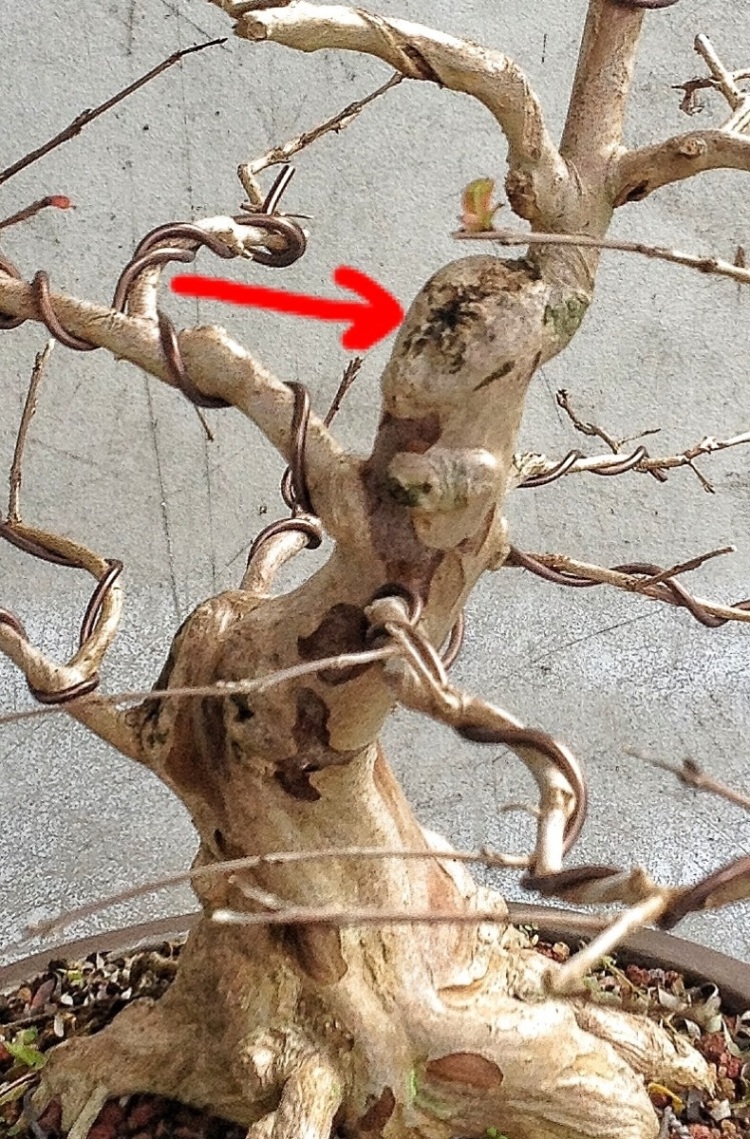
This was the trunk chop. Healed completely. So I’m not worried about any serious cuts. It’s a lot like the trident maple in this regard.

This will heal this year (hopefully). Sometimes, if a cut seems to have slowed, you score the leading edge of the callous and this will cause the tree to start healing again.
One reason I want to redesign the tree is the nebari.

This root is actually coming underneath from behind. It will eventually fuse (I may need to cut the bark where they meet and help it along) but for the moment I need to hide it. Patience
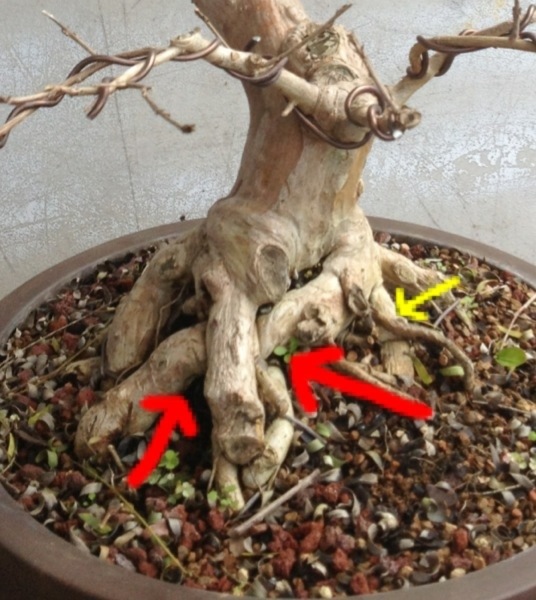
Here is that root.
The yellow arrow points to an area that just needs cleaning up. I’ll trim off the dead roots, and some crossing ones.
Here’s the work I’m gonna do……wait for it….
Ta-da!
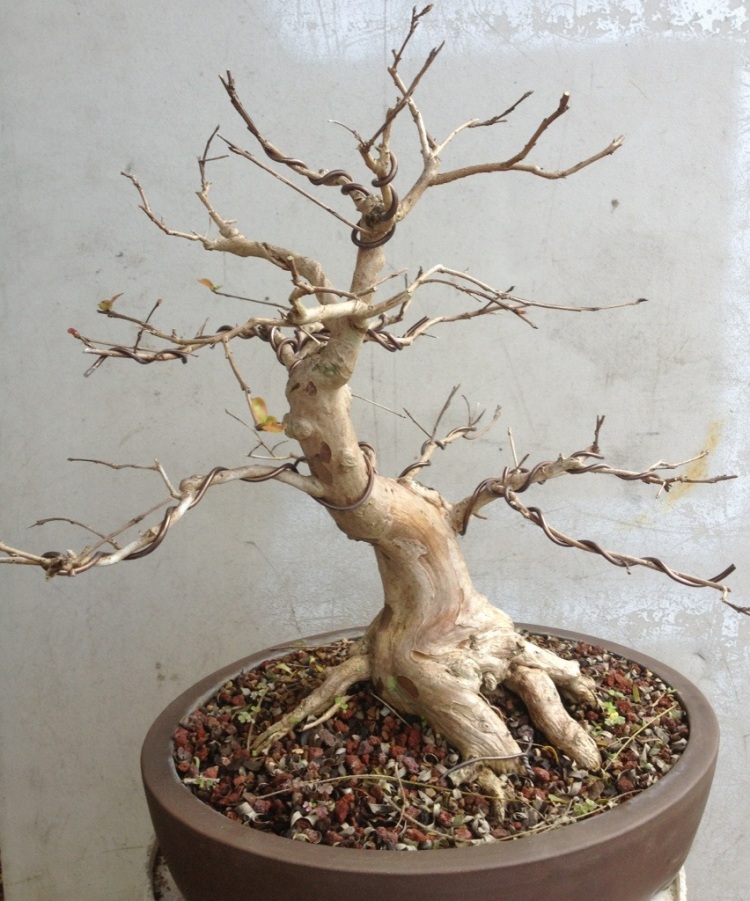
So, the redesign will just consist of turning it counterclockwise a bit; it brings the tree into balance, cleans up the nebari and actually puts the branch positions into better places.
The finished tree:
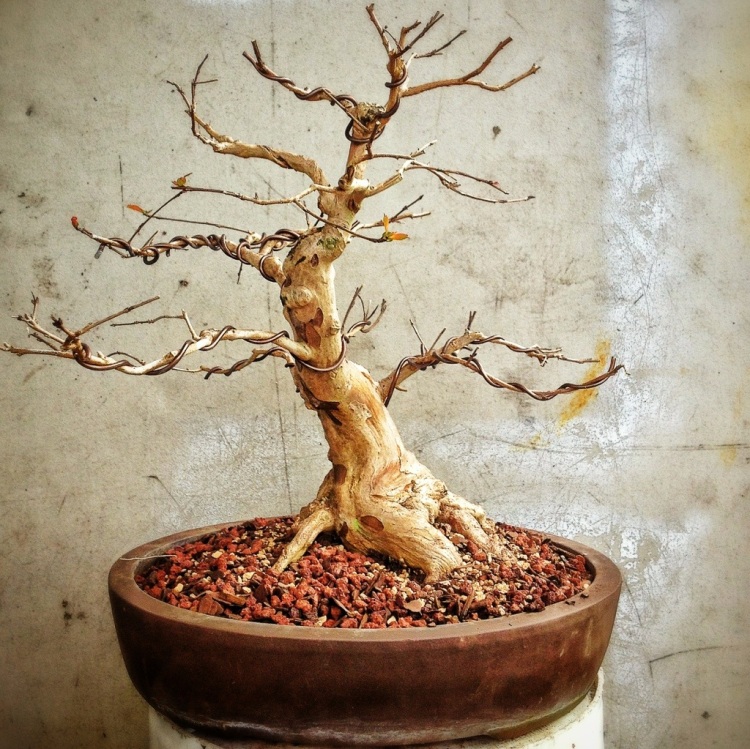
By just taking a slow 360 degree view of my tree and a critical eye (which actually consists of squinting at it. No, really, squinting. Try it, it really does accentuate any errant branches.) I’ve given it a new and fresh look. Without having to re-chop it. No crepe murder today.
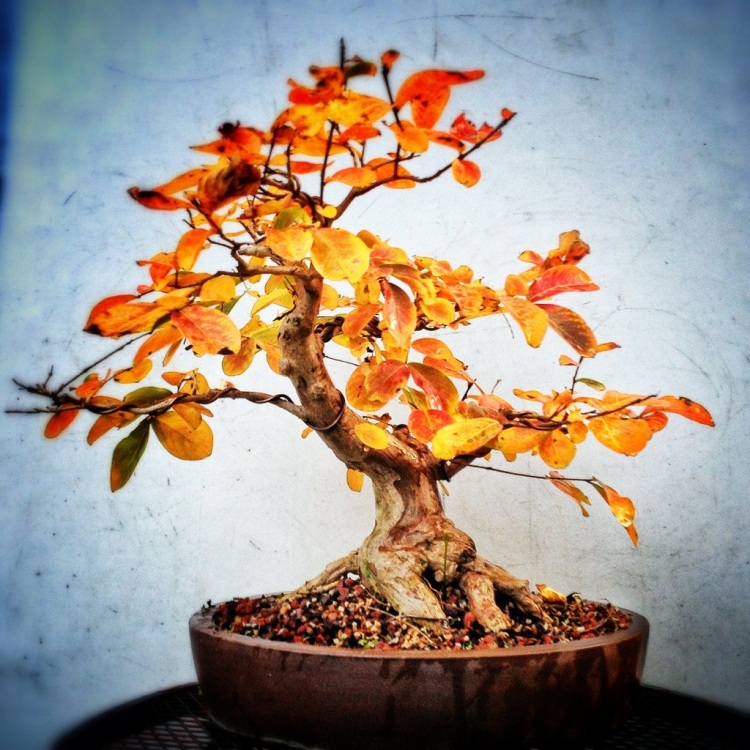
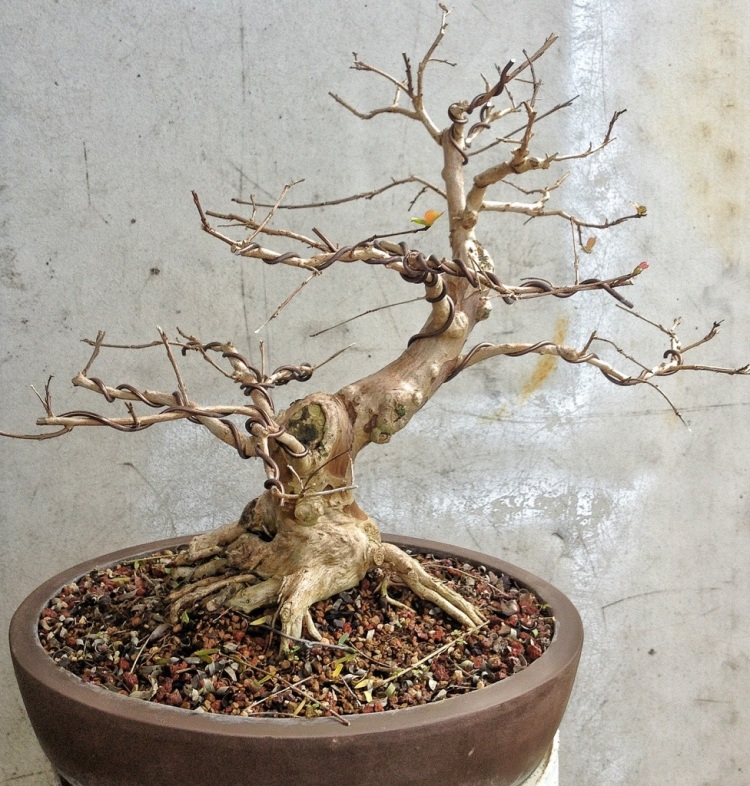

It looks like crepe murderers have recently struck a number of trees along my morning commute. On one street there are about 4 or 5 yards with 3 crepes each. All but one yard show various degrees of butchery, but the 3 trees left intact are not only the largest, but the ones with the most character.
May I also suggest this restyle technique be named ‘rotazione profondo’.
LikeLike
Nice!!
LikeLike
Reblogged this on Wolf's Birding and Bonsai Blog.
LikeLike
What a great redesign…wish I had enough knowledge to do this with my 40yo juniper
LikeLike